 I’m certainly no audiophile: although I can tell the difference in quality, the fact is I’m too cheap to pay for high-end equipment, and I know I’ll rarely have the time to immerse myself in the kind of sensory isolation necessary to really appreciate it anyway.
I’m certainly no audiophile: although I can tell the difference in quality, the fact is I’m too cheap to pay for high-end equipment, and I know I’ll rarely have the time to immerse myself in the kind of sensory isolation necessary to really appreciate it anyway.
That said, I still want things to sound good, and I notice when they don’t. I’ve observed with frustration the ever-shrinking dynamic range on CDs over the last decade, as the mastering process has been refocused on the singular goal of making everything absolutely as LOUD as possible.
Rolling Stone has recently published an interesting article on the phenomenon. Hopefully this bit of negative publicity will mark the turning point where we return to quality.
But I think blaming MP3 compression (as the article does, at least in part) is misguided; the problem predates the iPod and seems only tangentially related to the MP3 phenomenon. Although MP3 does drop certain details at the dynamic and frequency extremes, higher-quality MP3s sound indistinguishable from the uncompressed original versions on all but the highest-end equipment. And the loss of quality that comes with MP3 compression — data compression — has absolutely nothing to do with the dynamic compression being applied during the mastering process. The former removes data that will likely not be missed; the latter actually changes the relative loudness of different parts of the recording, making everything sound more homogeneous.
A good example of dynamic compression gone horribly wrong is in the new remixed versions of classic Genesis albums, released in 2007. (Of these, I currently own Duke and A Trick of the Tail. While I’ve got mixed feelings about the new stereo mixes — or more specifically, the masters of those stereo mixes — these CD/DVD sets are worthwhile for the rare archival concert footage alone.)
While overall I find these recordings to be a fascinating reinvention of the originals — with fine details originally lost in murky analog mixes suddenly brought back to life with bristling vividness — they also suffer to an almost incomprehensible degree from the current trend in excessively loud dynamic compression, particularly in sections of the music where the band is rocking out in full. The more delicate passages in the music sound wonderful and are a joy to discover, but the louder sections are compressed to such a degree that I can hardly pay attention to anything else.
Part of the problem may reside in my listening to the stereo mixes; these albums were remixed primarily for the purpose of creating 5.1 surround versions. Since I don’t have the equipment to listen to the 5.1 mixes, I have no idea what they might sound like, but I’ve been told that surround mixes rarely suffer from the mastering compression flaws that so severely plague the CD market today. Presumably that’s because the record labels don’t care about slapping the listener upside the head with the music in the surround mixes, whereas that’s apparently their primary objective with stereo CDs. Either that, or this is part of a long-term strategy to convince the public that stereo CD technology is woefully inadequate compared to 5.1 surround (which is true, but not to such a large degree), in order to get us all to invest in new audio equipment.

 I’m certainly no audiophile: although I can tell the difference in quality, the fact is I’m too cheap to pay for high-end equipment, and I know I’ll rarely have the time to immerse myself in the kind of sensory isolation necessary to really appreciate it anyway.
I’m certainly no audiophile: although I can tell the difference in quality, the fact is I’m too cheap to pay for high-end equipment, and I know I’ll rarely have the time to immerse myself in the kind of sensory isolation necessary to really appreciate it anyway. As I read
As I read 